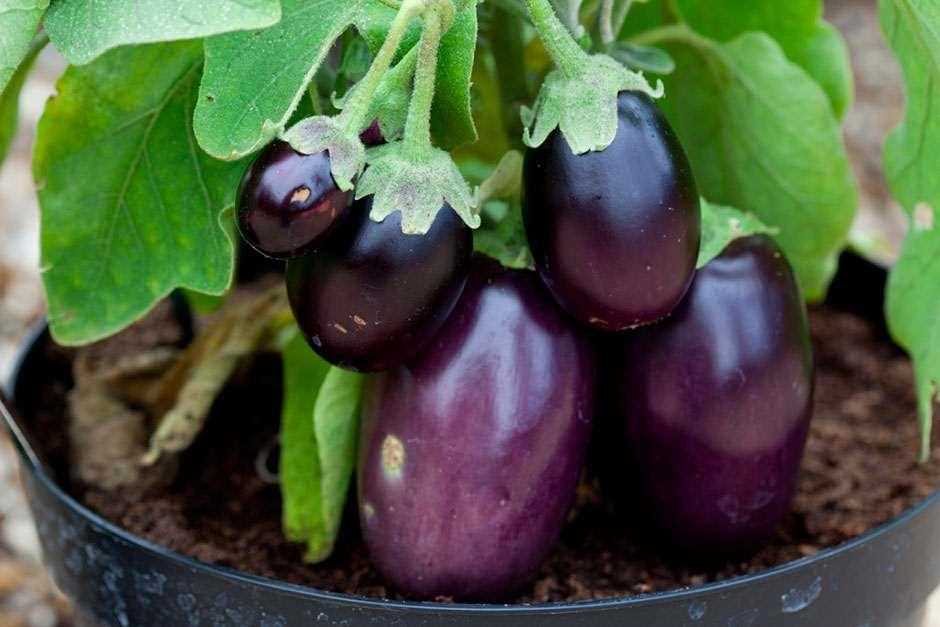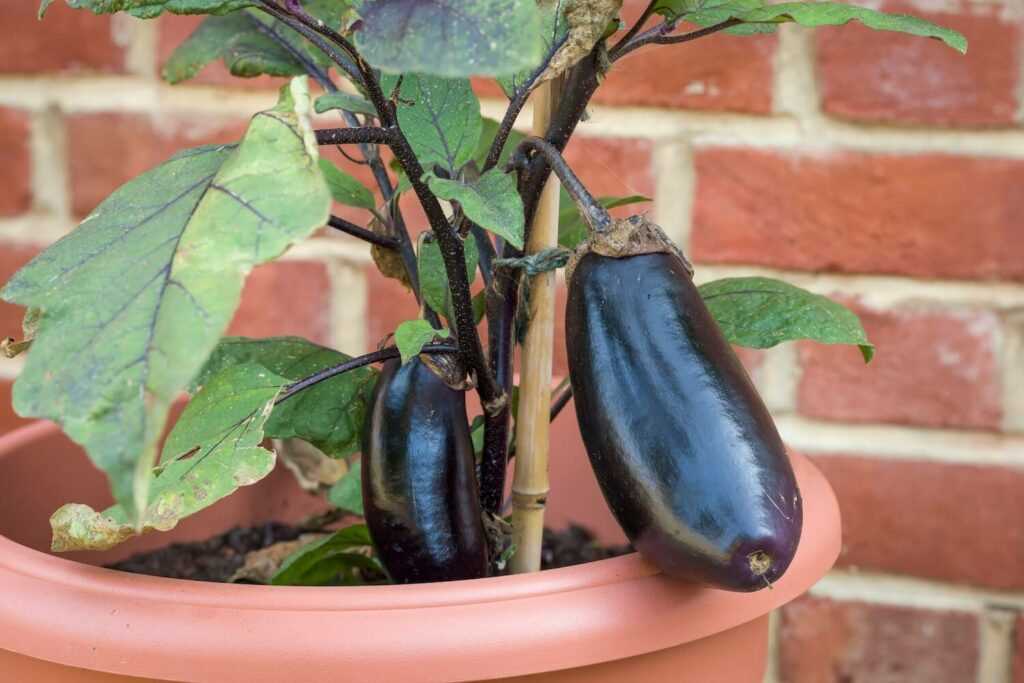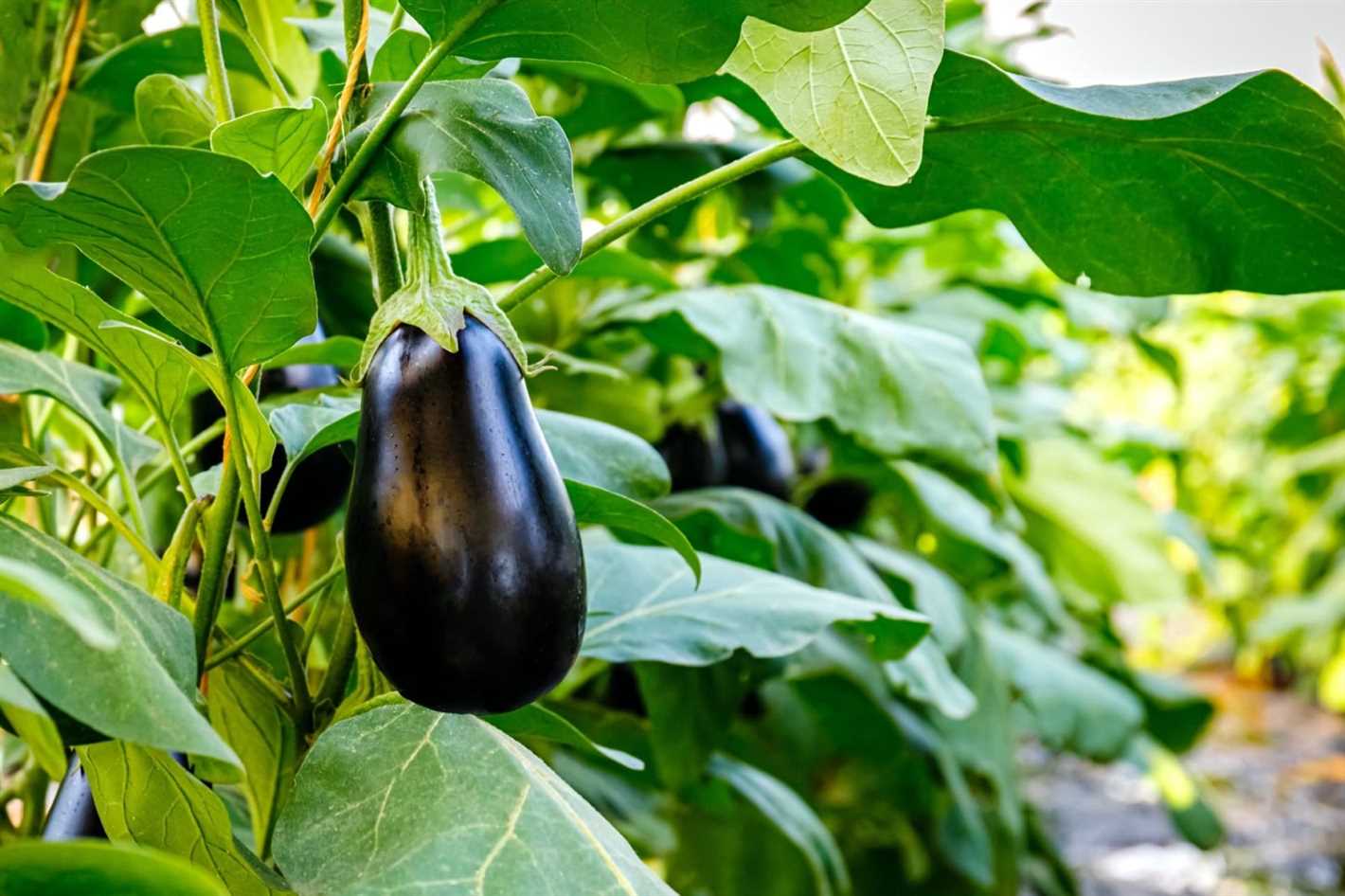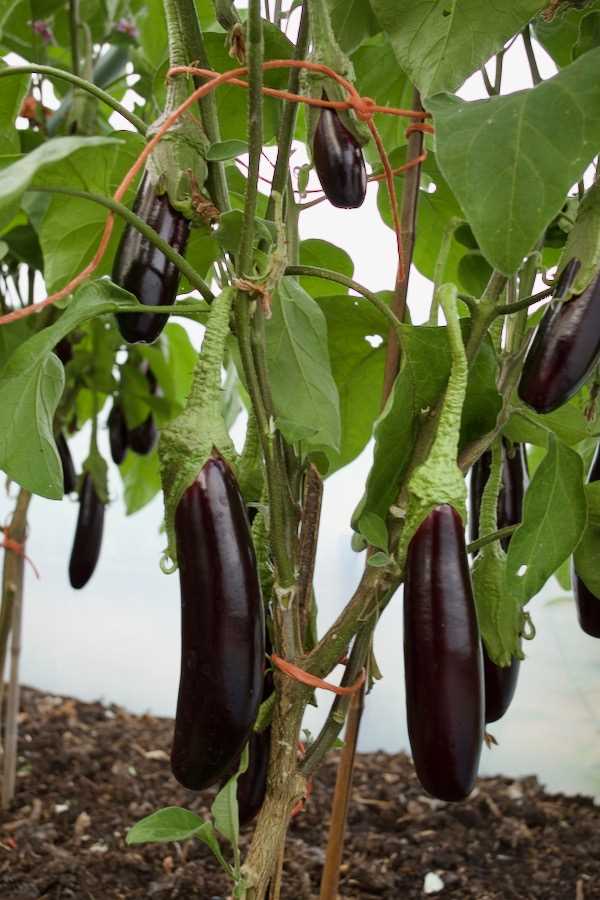- Choose the Right Varieties for Rootstock Buckets
- Growth Habits
- Disease Resistance
- Yield Potential
- Prepare the Rootstock Buckets
- Provide Adequate Drainage for Your Aubergines
- Use High-Quality Potting Soil for Optimal Growth
- Plant Your Aubergines at the Right Depth
- 1. Dig a Hole
- 2. Check Rootball
- 3. Position the Plant
- 4. Backfill the Hole
- 5. Mulch the Surface
- 6. Water Thoroughly
- Water Your Aubergines Regularly to Keep Them Hydrated
- Feed Your Aubergines with Balanced Fertilizers
- 1. Choose a balanced fertilizer
- 2. Apply fertilizer at the right time
- 3. Use organic fertilizers
- 4. Avoid over-fertilization
- 5. Mulch around the plants
- Monitor for Pests and Diseases to Ensure Healthy Plants
- Common Pests
- Common Diseases
- Preventive Measures
- “Question-Answer”
- What size of rootstock buckets should I use for planting aubergines?
- What type of potting mix should I use for planting aubergines in rootstock buckets?
- How often should I water aubergines planted in rootstock buckets?
- How can I support aubergine plants in rootstock buckets as they grow?
- “Video” Growing Longan Fruit Tree in a Pot
Are you looking to boost your aubergine yield this year? Planting your aubergines in rootstock buckets could be the solution you’ve been searching for!
Rootstock buckets provide several benefits for aubergine plants, including improved root development, better nutrient absorption, and increased resistance to diseases and pests. By planting your aubergines in these buckets, you can create a favorable environment for your plants to thrive and produce a higher yield.
When planting aubergines in rootstock buckets, it’s important to choose the right variety and size of the bucket. Opt for varieties that are suitable for container gardening and select buckets that allow for adequate drainage. Additionally, consider using containers with handles for easy transportation and maneuvering.
Proper soil preparation is crucial when planting aubergines in rootstock buckets. Use a well-draining potting mix enriched with organic matter to ensure your plants receive the necessary nutrients. It’s also recommended to mix in a slow-release fertilizer to provide a continuous supply of nutrients throughout the growing season.
Choose the Right Varieties for Rootstock Buckets
When selecting the right varieties of aubergines for planting in rootstock buckets, it is important to consider their growth habits, disease resistance, and yield potential. Here are some factors to consider when making your choice:
Growth Habits

Choose varieties that have a compact or bushy growth habit. These types of aubergines are better suited for container gardening and will not outgrow the limited space provided by rootstock buckets. Look for varieties that are described as patio or dwarf aubergines.
Disease Resistance
Aubergines are susceptible to various diseases such as fungal infections and pests like aphids. To ensure a healthy crop, select varieties that have good disease resistance. Look for varieties that are resistant to common aubergine diseases such as verticillium wilt, fusarium wilt, and tobacco mosaic virus.
Yield Potential

Consider the yield potential of the varieties you choose. Some varieties are known for producing larger fruits or have a higher overall yield. Look for varieties that are described as high-yielding or prolific. This will help maximize your harvest from the limited space provided by the rootstock buckets.
By choosing the right varieties for planting in rootstock buckets, you can ensure a successful and bountiful crop of aubergines. Take into account the growth habits, disease resistance, and yield potential of the varieties you choose to optimize your yield and create a thriving container garden.
Prepare the Rootstock Buckets
Before planting your aubergines in rootstock buckets, it is important to properly prepare the buckets to ensure optimal growth and yield. Here are some steps to follow:
- Clean the Buckets: Start by cleaning the rootstock buckets to remove any dirt or debris from previous use. Use warm soapy water and a scrub brush to clean both the inside and outside of the buckets. Rinse them thoroughly with clean water and let them dry completely.
- Drill Drainage Holes: Next, using a drill with a 1/4-inch drill bit, create drainage holes in the bottom of the buckets. These holes are essential for proper water drainage and to prevent waterlogged roots. Aim for at least 4 to 6 evenly spaced holes.
- Add a Layer of Gravel: After drilling the drainage holes, add a layer of gravel to the bottom of each bucket. This will further improve drainage and prevent the roots from sitting in excess water. Aim for a layer that is about 1 to 2 inches thick.
- Fill with Potting Mix: Fill each bucket with a good quality potting mix, specifically formulated for container gardening. Make sure to leave about 2 inches of space from the top of the bucket to allow for watering without overflow. The potting mix should be loose, well-draining, and nutrient-rich.
- Apply Slow-Release Fertilizer: To provide your aubergines with the necessary nutrients throughout the growing season, sprinkle a slow-release fertilizer evenly on top of the potting mix. Follow the instructions on the fertilizer packaging for the recommended amount.
- Water Thoroughly: After all the preparations, water the buckets thoroughly, allowing the water to fully penetrate the potting mix. This will help settle the mix and ensure that it is evenly moist.
By following these steps, you will have properly prepared your rootstock buckets for planting aubergines. This will create an ideal growing environment for your plants and help boost your yield.
Provide Adequate Drainage for Your Aubergines
Proper drainage is crucial for the health and productivity of your aubergine plants. Without adequate drainage, the roots can become waterlogged, leading to root rot and other diseases. Here are some tips to ensure your aubergines have proper drainage:
- Choose the right container: Opt for a rootstock bucket or a large container with drainage holes at the bottom. This will allow excess water to flow out and prevent waterlogging.
- Use a well-draining soil mix: Mix in perlite or vermiculite with your potting soil to improve drainage. This will help excess water to drain out quickly.
- Place a layer of gravel or small stones at the bottom: Before adding soil, add a layer of gravel or small stones at the bottom of the container. This will create a drainage layer, allowing water to flow freely.
- Water the plants properly: Avoid overwatering your aubergine plants. Water them deeply but infrequently, allowing the soil to dry out slightly between waterings. This will prevent water from sitting in the container for too long.
- Check for proper drainage: After watering, ensure that the excess water is draining properly from the container. If there is still water sitting in the bottom after a few minutes, you may need to adjust the drainage by adding more holes or adjusting the soil mix.
By providing adequate drainage for your aubergines, you can help prevent water-related issues and promote healthier and more productive plants. Take the time to properly prepare the containers and monitor the drainage regularly to ensure optimal growing conditions for your aubergines.
Use High-Quality Potting Soil for Optimal Growth
When planting aubergines in rootstock buckets, it is crucial to use high-quality potting soil. The quality of soil you choose will have a significant impact on the growth and yield of your aubergine plants. Here are a few reasons why using good potting soil is essential:
- Improved Drainage: High-quality potting soil is formulated to have excellent drainage properties. This means that excess water will easily pass through the soil, preventing waterlogging and root rot.
- Nutrient Availability: Good potting soil is enriched with essential nutrients that are necessary for the healthy growth of aubergine plants. These nutrients ensure that your plants have access to the fuel they need to thrive.
- Optimal pH Levels: The pH level of your potting soil plays a crucial role in nutrient availability. High-quality potting soil is balanced to maintain the optimal pH range for aubergine plants, enabling them to absorb nutrients more effectively.
- Reduced Disease Risk: Using high-quality potting soil can help reduce the risk of diseases affecting your aubergine plants. Good soil is often sterilized, which helps eliminate harmful pathogens that could cause plant diseases.
When selecting potting soil for your aubergines, look for brands that are specifically formulated for vegetable gardening. These soils often contain a blend of organic materials, such as compost, peat moss, and perlite, which enhance the soil structure and fertility. Additionally, it is a good idea to check the soil bag for the NPK (nitrogen, phosphorous, and potassium) ratio, as these nutrients are crucial for aubergine growth.
Using high-quality potting soil is a simple yet effective way to support the growth and productivity of your aubergine plants. By providing them with the right growing medium, you are setting them up for success.
Plant Your Aubergines at the Right Depth
Proper planting depth is essential for the successful growth of your aubergines. When planting in rootstock buckets, you need to ensure that the plants are placed at the right depth to promote healthy root development and maximum yield. Here are some tips to help you plant your aubergines at the right depth:
1. Dig a Hole

Begin by digging a hole in the center of your rootstock bucket. The hole should be deep enough to accommodate the roots of your aubergine plant.
2. Check Rootball

Gently remove the aubergine plant from its current container and inspect the rootball. It should be firm and intact, with no signs of damage or disease.
3. Position the Plant
Place the aubergine plant in the hole, making sure that the top of the rootball is level with the top of the bucket. The plant should be centered and upright.
4. Backfill the Hole

Fill the hole with a mixture of potting soil and compost, gently firming it around the roots as you go. Avoid compacting the soil too much, as this can hinder root growth.
5. Mulch the Surface
Once the hole is filled, mulch the surface of the soil with a layer of organic material, such as straw or wood chips. This will help conserve moisture and suppress weeds.
6. Water Thoroughly
After planting, water the aubergine plant thoroughly to ensure that the soil around the roots is evenly moist. Continue to water regularly throughout the growing season.
By planting your aubergines at the right depth, you can give them the best possible start and enjoy a bountiful harvest. Remember to provide adequate support for your plants as they grow, and monitor them for pests and diseases. Happy planting!
Water Your Aubergines Regularly to Keep Them Hydrated
One of the most important factors in growing healthy and productive aubergines is providing them with adequate water. Aubergines, like other plants, rely on water for photosynthesis, nutrient absorption, and overall growth.
To keep your aubergines hydrated, follow these tips:
- Consistent watering: Aubergines require consistent moisture in the soil, so it’s important to water them regularly. Aim to water the plants at least once a week, especially during hot and dry periods.
- Deep watering: When watering your aubergines, make sure to water deeply. This means allowing the water to penetrate the soil and reach the roots. Shallow watering may only moisten the surface, which can lead to shallow root development. Use a watering can or a garden hose with a slow stream to ensure proper water absorption.
- Mulching: Applying a layer of organic mulch around the base of the plants can help retain moisture in the soil. Mulch acts as a barrier, preventing evaporation and reducing the frequency of watering needed.
- Monitoring soil moisture: Regularly check the moisture level of the soil around your aubergines. Stick your finger about an inch into the soil – if it feels dry, it’s time to water. On the other hand, if it feels moist, hold off on watering to prevent overwatering, which can lead to root rot.
Remember, it’s essential to strike a balance with watering. While aubergines need consistent moisture, they don’t thrive in waterlogged conditions. Avoid overwatering, as it can suffocate the roots and cause the plants to wilt or rot.
By following these watering tips, you can ensure that your aubergines remain hydrated and healthy, resulting in higher yields and better quality fruits.
Feed Your Aubergines with Balanced Fertilizers
Proper fertilization is essential for the healthy growth and high yield of your aubergine plants. By providing the right balance of nutrients, you can ensure that your plants have everything they need to thrive. Here are some tips on how to feed your aubergines with balanced fertilizers:
1. Choose a balanced fertilizer
When selecting a fertilizer for your aubergines, look for a balanced formulation that contains a mix of nitrogen, phosphorus, and potassium. These three macronutrients are essential for plant growth and development.
2. Apply fertilizer at the right time
Start fertilizing your aubergines when they are about six weeks old. Apply the fertilizer once every two weeks throughout the growing season. Be sure to follow the instructions on the fertilizer package for the recommended amount to use.
3. Use organic fertilizers
Organic fertilizers are a great option for feeding your aubergines as they are derived from natural sources and are gentle on the plants. Examples of organic fertilizers include compost, manure, and seaweed extract.
4. Avoid over-fertilization

While it is important to provide your aubergines with enough nutrients, over-fertilization can be harmful. Too much nitrogen can result in excessive leaf growth at the expense of fruit production. Follow the recommended dosage and avoid applying more fertilizer than necessary.
5. Mulch around the plants

Applying mulch around the base of your aubergine plants can help retain moisture, reduce weed growth, and provide a slow release of nutrients. Organic mulches, such as straw or wood chips, are particularly beneficial as they break down over time and enrich the soil.
By following these tips and providing your aubergines with balanced fertilizers, you can ensure healthy growth, strong plants, and a bountiful harvest.
Monitor for Pests and Diseases to Ensure Healthy Plants
One of the key aspects of successful aubergine cultivation is regularly monitoring your plants for pests and diseases. By staying vigilant and taking action at the first signs of a problem, you can help ensure the health and productivity of your plants.
Common Pests
Some common pests that can affect aubergine plants include:
- Aphids: These small insects suck on the sap of the plants and can cause stunted growth and distorted leaves.
- Whiteflies: These tiny, white flying insects also feed on plant sap and can spread viral diseases.
- Spider mites: These minuscule arachnids can infest the undersides of leaves and cause yellowing, bronzing, and webbing.
- Caterpillars: Various types of caterpillars can chew on the leaves and stems of aubergine plants, leading to extensive damage.
Regularly inspect your plants for any signs of these pests, such as discolored leaves, distorted growth, or the presence of insects. If you notice any infestations, take immediate action to control them. This may involve using organic insecticides, introducing beneficial insects, or physically removing the pests.
Common Diseases
There are several diseases that can affect aubergine plants, including:
- Verticillium wilt: This fungal disease causes yellowing, wilting, and death of the plant. It can be spread through contaminated soil or water.
- Phytophthora blight: This waterborne disease can cause rotting of the roots, stems, and fruits, leading to plant death.
- Mosaic viruses: These viral diseases can cause mottling, stunting, and deformation of the leaves and fruits.
Inspect your plants regularly for any signs of fungal growth, wilting, or discoloration. If you suspect a disease, remove and destroy the affected plants to prevent further spread. It’s also important to practice good sanitation, such as cleaning your tools and avoiding overwatering, to minimize the risk of disease transmission.
Preventive Measures

Aside from regular monitoring, there are several preventive measures you can take to reduce the risk of pest and disease infestations:
- Crop rotation: Avoid planting aubergines in the same location year after year to minimize the buildup of pests and diseases in the soil.
- Sanitation: Clean up plant debris and fallen leaves to remove potential breeding grounds for pests and diseases.
- Avoid overwatering: Excessive moisture can encourage the growth of fungal diseases, so water your plants only when necessary.
- Provide good air circulation: Proper spacing between plants and pruning can help improve air circulation, reducing the risk of fungal diseases.
- Use disease-resistant varieties: Choose aubergine varieties that are known to be resistant to common diseases in your area.
By implementing these measures and staying vigilant in monitoring your plants, you can greatly improve the chances of growing healthy and productive aubergines in rootstock buckets.
“Question-Answer”
What size of rootstock buckets should I use for planting aubergines?
It is recommended to use large rootstock buckets for planting aubergines. A 5-gallon (18-liter) bucket should provide enough space for the plant’s root system to grow. However, if you have access to larger containers, such as half barrels or containers specifically designed for growing aubergines, those would be even better. The larger the container, the more soil it can hold, which means more nutrients and water for the plant.
What type of potting mix should I use for planting aubergines in rootstock buckets?
When planting aubergines in rootstock buckets, it is important to use a well-draining potting mix that is rich in organic matter. You can either purchase a pre-packaged potting mix labeled for vegetables or make your own mix. A good homemade mix can be made by combining equal parts of peat moss, compost, and vermiculite or perlite. This mix will provide good drainage for the plants’ roots while also providing them with the necessary nutrients.
How often should I water aubergines planted in rootstock buckets?
Aubergines planted in rootstock buckets should be watered regularly to keep the soil moist but not waterlogged. The frequency of watering will depend on factors such as the weather, container size, and the plant’s stage of growth. As a general guideline, check the top inch of soil, and if it feels dry, it is time to water. During hot weather, you may need to water every day or even twice a day, while during cooler periods, you may only need to water every few days.
How can I support aubergine plants in rootstock buckets as they grow?
To support aubergine plants in rootstock buckets as they grow, you can use stakes or trellises. Place the stakes or trellises in the buckets at the time of planting to avoid damaging the roots later on. As the plants grow, secure the main stem to the stake or trellis using soft ties or twine. You can also prune the plants to remove any excessive growth and focus the energy on growing strong branches. Supporting the plants will help prevent them from falling over and will make it easier to harvest the aubergines.







